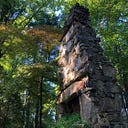Member-only story
“Monsters, Race, and Comics” Syllabus

Over the past few weeks, I’ve been thinking about the theme of my fall course. Initially, I wanted to do a course on “neo-slave” narratives, interrogating that term and looking at texts such as Robert Jones, Jr.’s The Prophets, Toni Morrison’s Beloved, Octavia Butler’s Kindred, and more. While I still want to teach this course, my focus started to shift the more I thought about the upcoming semester. Now, I am teaching a course entitled “Monsters, Race, and Comics” looking at the ways that Black, Asian, Indigenous, Latinx, and Jewish authors and artists use the gothic and horror to push back against the conservative inclinations of the gothic tradition. I’m still formulating this course, but in this post I want to share an early iteration that I am thinking about right now.
Course Overview
Writing about the Gothic, Robert K. Martin notes that is “most often a politically conservative form that gives expression to the anxieties of a class threatened with violent dissolution.” If we think about this framing within the context of nineteenth century authors such as Edgar Allan Poe, then the Gothic strands that arose during the ENlightenment and Romanticism fit this position. Poe’s stories, such as “Hop-Frog or the Eight Chained Ourang-Outangs,” couch “politically conservative” fears underneath the veneer of horror. In “Hop-Frog,” the fear of insurrection by enslaved individuals lies underneath the surface. Even with this history, though, Black, Asian, Latinx, and Indigenous use the Gothic to push back against the tropes that present people of color as ghouls and monsters that threaten “violent dissolution” of the prevailing system.
Theodore Gross, in 1971, noted that African American texts “instinctively adopted the Gothic tradition of American literature and given its supernatural and surrealistic characteristics a realistic basis, founded on the actual lives often lived in the Gothic manner, that is indeed terrifying.” We see this in narratives by enslaved individuals such as Frederick Douglass, Solomon Northup, Mary Prince, and Harriett Jacobs. For Jacobs, the crawl space in the roof of her grandmother’s house feels like something out of Poe’s stories, confining her, both physically and psychologically. However, Jacobs’ experiences were not fiction. They were fact. They were, as Maisha Wester puts it, her…
